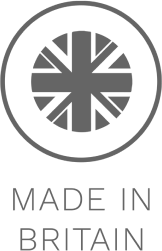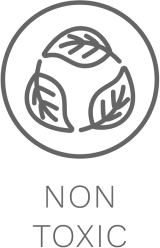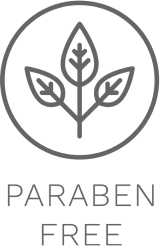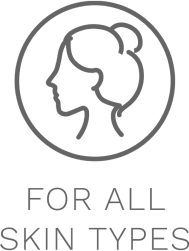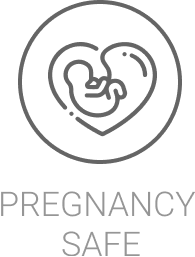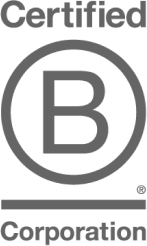Shea butter has been a top-notch organic remedy for many skin-related issues for quite some time. Originating in West African, the plant is known to reduce acne scars, pimples, stretch marks, redness, swelling, and more. So if you’re tired of dealing with frustrating scars, shea butter might be the best solution for you.
Shea butter works for acne scars because it softens the tissue and removes keloids (also known as a scar). It also removes bacteria, which prevents further scarring while it’s healing. Shea butter won’t clog your pores and doesn’t contain chemical irritants, unlike many inorganic products.
In this article, I’ll explain why shea butter is one of the best solutions for acne scars, how you can use it, and a healthy recipe you can make at home. I’ll also cover how much shea butter you should use, how often to use it, and how to get it.

Here’s Why Shea Butter Reduces Scars
Health professionals and at-home skincare experts claim shea butter is one of the best solutions to treat acne and scars. Shea butter is an excellent choice if you’re dealing with redness, scar tissue, active acne, breakouts, and similar issues. There are many reasons shea butter reduces scars caused by acne, so let’s dive into the list below.
- According to Healthline, shea butter naturally fights keloids. Keloids are the basic form of scar tissue. Whether they’re several years old or newly developed, keloids can be eliminated, which deteriorates the scar and makes it much more visually appealing. Frequently using a small amount of shea butter is more than enough.
- Shea butter is known to soften acne scars. Scar tissue is often rough, bumpy, and unsightly. All three of these issues are reduced by softening the skin. You’ve probably tried lotion and similar products when fighting your acne scars. However, pure shea butter keeps your skin much longer.
- It reduces scar tissue swelling. Scars can swell and become more apparent to yourself and other people. If you’re embarrassed or worried about covering them with makeup, you’ll love the fact that shea butter lowers old scar tissue, making it appear flush with the skin and less noticeable.
- There are plenty of Omega-3 fatty acids in shea butter. Skinography explains Omega-3 fatty acid supplements are often recommended because they hydrate the skin and promote long-term moisturizing. Instead of feeling rough, your acne tissue will feel like the rest of your skin.
As you can see, many scientific explanations show why shea butter is such an effective ingredient. It’s not viewed as a questionable supplement since there’s so much evidence behind the countless scar-relieving claims. I’ll provide a quick and helpful shea butter recipe to fight acne scarring in the next section.
Here’s an educational video detailing shea butter’s many skin-related health benefits:
Shea Butter Acne Scar Recipe
Whipping shea butter can make it much easier to apply to your skin. So if you want to make a DIY shea butter treatment for your acne scars, you’re in the right place. Note that there are countless shea butter moisturizers to choose from if you don’t want to make one.
Without further ado, here’s my favourite shea butter acne scar recipe:
- Scoop one tablespoon of raw shea butter into a mixing bowl. Vitagene recommends stirring the shea butter until it gets creamy before adding any other ingredients. This process ensures it’ll blend well with everything, preventing clumping or an uneven mix of the essential oils and rosewater.
- Add one tablespoon of rosewater if you want a lotion texture instead of a creamy recipe. This is an optional step since some people don’t mind the creamy texture or semi-hardened feeling of raw whipped shea butter. You could substitute rosewater for olive oil for optimal moisturizing.
- Add your favourite essential oils (citrus oils and cedarwood essential oils are excellent choices). A few drops of each essential oil will be enough to do the trick. Lavender, geranium, and many other essential oils boast incredible benefits to reduce acne scarring, making them an irreplaceable ingredient for many DIYers.
- Apply a small amount of the solution to an acne scar. If you’ve never used shea butter on your skin, you should use a finger-sized portion to test the area. Keep an eye for redness or irritation. The good news is that shea butter works for almost every skin type, so you shouldn’t notice any issues.
- Use the treatment once per day on the scars. Shea butter is a fantastic solution for acne scars, but it’s not a miracle in a bottle. Consistent applications will ensure you achieve the desired results. Don’t expect instant results after one use. However, you’ll likely notice a difference within a few weeks.
Are you looking for the best raw shea butter? Try the Unrefined African Shea Butter by Better Shea Butter. This one-pound bar is perfect for people making their shea butter acne treatments from home. It comes with recommendations and simple tricks to use their shea butter. Use it for the previously mentioned recipe or whip it and try it without any additives.
How to Use Shea Butter to Treat Acne Scars
Whether you prefer raw shea butter, a DIY recipe, or a store-bought mixture, there are many options at your fingertips. Shea butter comes in many forms, most of which can fight your acne scars through long-term usage. If you don’t know how to apply it, how much you need, or how much you should use, read on.
Try these recommendations to use shea butter for acne scars:
- Keep your shea butter stored at room temperature. Shea butter is prone to melting if it gets too warm, so make sure you don’t leave it under the sun or in a heated space. If it’s melted for too long, it’ll separate and become much more difficult to apply to your skin. The good news is it melts upon skin contact for maximum absorption.
- Clean your skin with natural ingredients or wipes beforehand. Shea butter clings to the surface of your skin and pushes irritants away, which is helpful for protecting it. However, it won’t mix with the oils and other debris on your skin. You can use shea butter after your skincare routine or warm your face with a hot towel to open the pores.
- Apply the shea butter in circular motions to help it soak into your skin. Rough back-and-forth applications smear it around and make it harder for the shea butter to do its job. It’s important to ensure that you cover all of your acne scars to prevent visual differences. Many people go slightly beyond the scarring.
- If your skin looks dry after using shea butter products, check if they have witch hazel or alcohol. These ingredients remove moisture from your skin, making it red, dry, and itchy. Always review the ingredients before getting a shea butter solution from a store or online. My recommendation from the previous section has zero additives.
Using shea butter can work wonders for your acne scars. These simple tricks can make it much easier to use your treatments once per day. There’s no reason to spend countless hours using dozens of skincare products since shea butter has everything your skin needs to look and feel healthy.

Pure Shea Butter Doesn’t Contain Chemical Irritants
Many premixed acne scar treatments (including those found at the doctor’s office) contain dozens of ingredients. Most of them are healthy for your skin, but quite a few additives can dry, irritate, and damage your skin. Using too much alcohol and other drying products can cause much more harm than good.
Pure shea butter or DIY recipes don’t contain any of these ingredients. As a result, you don’t have to worry about damaging your skin or worsening your acne scars. Nothing’s worse than spending tons of time, money, and energy trying to remove your acne scars without any results. Don’t complicate the process; Pure, organic ingredients are almost always the only necessary options.
If you use shea butter and it’s hurting your skin or causing redness, one of two issues is likely occurring:
- You might be allergic to shea butter or something found in the ingredients list. Shea butter allergies are uncommon but not unheard of. I recommend using a very small amount to test an area out of sight, such as your upper arm or leg. If you show a reaction, nobody will notice the difference.
- You’re probably not using pure shea butter. Any other ingredients found in the solution could be the culprit. For this reason, I suggest using products with as few additives as possible. Most people can benefit from using shea butter products with fewer than three ingredients.
Naturally Tribal Skincare claims shea butter can expire after 24 months. Expired shea butter might look, feel, or smell off. If you’re unsure, it’s best to find a receipt or toss it out. Using it likely won’t cause any issues, but it’s a waste of time.
It Can Reduce Acne Inflammation
If you have acne and you’re worried about it scarring, inflaming, or becoming unsightly, you’ll be happy to know shea butter stops the swelling. Not only does it work for old scars, but it prevents new ones. Once you remove your acne scars, you should keep it a part of your regular skincare routine to keep everything in check.
In most cases, redness, swelling, and the acne’s color (whiteheads, blackheads, and so on) are the three traits that make acne unfortunate to deal with. Shea butter tackles all three issues, making your skin look much better in a few days. Of course, it takes a little longer to remove scars, but shea butter can make your skin look glowing very quickly.
Acne inflammation and scarring can often result in pain. If your skin feels uncomfortable surrounding the acne scars, shea butter can be a pain reliever. Constant pressure causes inflamed skin to stretch and hurt. As your skin is moisturized, the Omega-3 fatty acids in shea butter restore blood circulation and suppress the pain.
Shea Butter is Antibacterial
Most acne can be attributed to bacteria, clogged pores, and hormonal changes. Why not do your best to remove two of those issues? You might not be able to influence natural hormonal differences, but shea butter unclogs your pores and kills bacteria before it can cause acne. If you have active acne, shea butter will reduce the size of your pores, too.
If you’re making an at-home shea butter treatment, you could add antibacterial essential oils like lavender oil, lemon oil, or tea tree oil. Vitamin E oil is another suggestion to improve moisturization and repair damaged skin caused by acne scars. It’s best to use vitamin E oil in your shea butter as soon as the scars develop for the best results.
Many topical treatments packed with chemicals don’t address the cause of the problem. Instead of simultaneously being a preventative and a solution, these chemicals simply mask the issue.
They might make your skin look better, but it’ll go back to its scarred state right when you stop using the products. Shea butter works as a long-term solution that removes the scars, not masks them.
Shea Butter Doesn’t Fill Your Pores
The problem with many acne treatments is that they can clog your pores. While they strip away the debris and bacteria, they fill the pores and create more blemishes. Shea butter doesn’t clog your pores since it soaks into your skin without laying on the surface. The result is a clean, refreshing appearance with reduced pores.
The only way shea butter might be an issue for your pores is if you don’t follow the previous instructions of removing surface debris before applying it. Shea butter requires clean skin, so make sure you don’t use it right after exercising or working all day. You could use it after showering or washing your face with your nighttime skincare setup.
You can leave shea butter on your skin for as long as you’d like since it doesn’t need to be removed. However, if you want to get rid of the scent, you could sleep with it on for about eight hours and wash your face in the morning.
A Little Goes a Long Way
It’s best to use a pea-sized amount of shea butter on your face (or wherever your acne scar tissue is found). This organic ingredient works hard to remove scars, acne, and more; But using too much of it can make it cake on your skin, causing irritation and inviting debris to land and stick on your skin.
Use a tiny bit of it, wipe it in circular motions, and let it soak into your skin. If there’s too much or it won’t absorb into your skin, gently dab some of it off with a cotton round or Q-tip.

Conclusion
Now that you know all of the benefits of shea butter and why it can remove and prevent acne scars, you can start using it as soon as possible. Remember to clean your skin before using the solution to get the most out of your shea butter. Also, don’t use too much, or you’ll risk overwhelming your skin.




